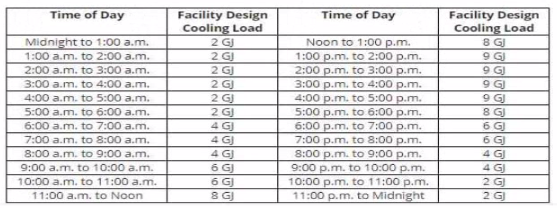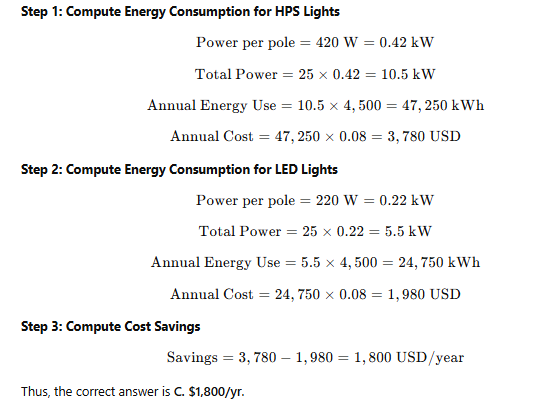AEE CEM - Certified Energy Manager (CEM)
A 50-Hz alternating current (AC) induction motor has 3 pole pairs (6 poles). What is the synchronous speed of the motor?
Which type of lighting control technique operates in "manual on" and "auto-off mode, and can be used in situations where there is brief occupancy that do not need lights on?
A controller has a signal output that can range from 4 to 20 mA (milli-amperes). The controller regulates the output temperature from a three-way mixing valve from 5°C to 15°C. What is the control gain?
A facility has the thermal cooling load profile shown in the table below. The utility rate tariff has an on-peak time-of-use billing period that begins at 10:00 a.m. and ends at 7:00p.m. Calculate the storage capacity required for a load-shifting operating strategy, to make sure that no thermal cooling Is generated by the chiller during the on-peak utility rate period.

[Question from the previous image, which was about storage capacity for load shifting, but the table was missing]
An outdoor parking area has 25 light poles. Each pole has a 420 Watt (ballast included) high-pressure sodium (HPS) luminaire. The parking area lights are illuminated 4,500 hours per year and the electricity cost is $0.08/kWh. What is the annual energy cost reduction if each luminaire is replaced with a 220-Watt (driver included) LED luminaire?
According to the institute of Electrical and Electronic Engineers (IEEE) standard 519. "Recommended Practices and Requirements for Harmonic Control in Electrical Power Systems." the maximum total harmonic distortion (THD) for general low voltage systems less than 600 votts) should be:
SELECT THE CORRECT ANSWER
Lighting systems operate with a certain recoverable light loss factor. Control systems with photocell sensor inputs combined with dimming ballasts can be used to regulate dimming levels to maintain a continuous light level in the work space. Which of the following best describes this type of control?
A piece of equipment costs $250,000 to buy and install. The annual operating cost for the equipment is $50,000 per year. The equipment will last 15 years. After 15 years, the equipment will have no net salvage value. The annual interest rate is 10%. What is the present value of the life-cycle cost to own and operate the equipment? Use end-of-year annual cash flow analysis.
If the initial design process includes group relamping, how can this reduce the number of lamps required to illuminate a space?
Which of the following statements best describe Demand Control Ventilation (DVC) in Building Automation Systems?



 A table with numbers and symbols
AI-generated content may be incorrect.
A table with numbers and symbols
AI-generated content may be incorrect.